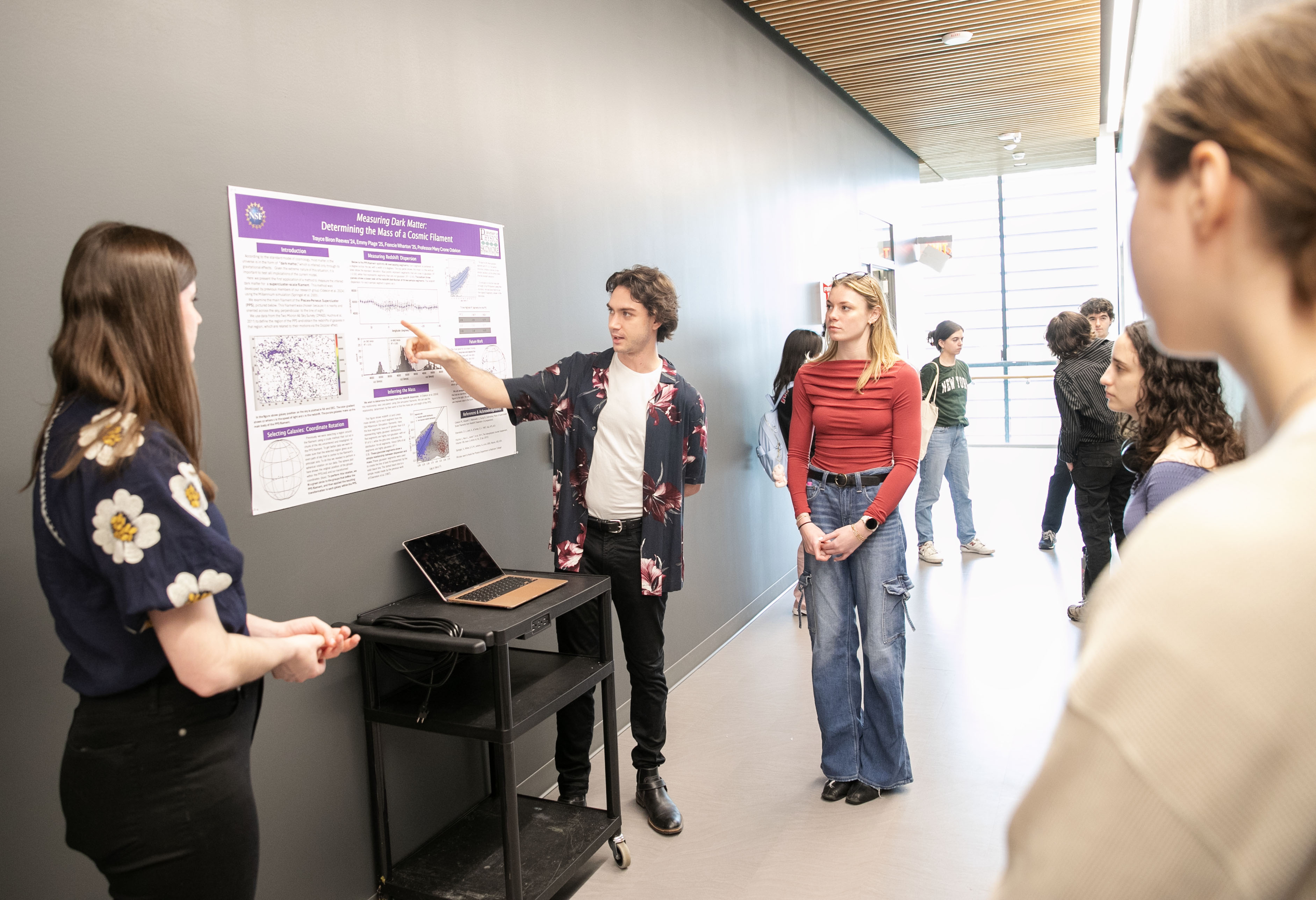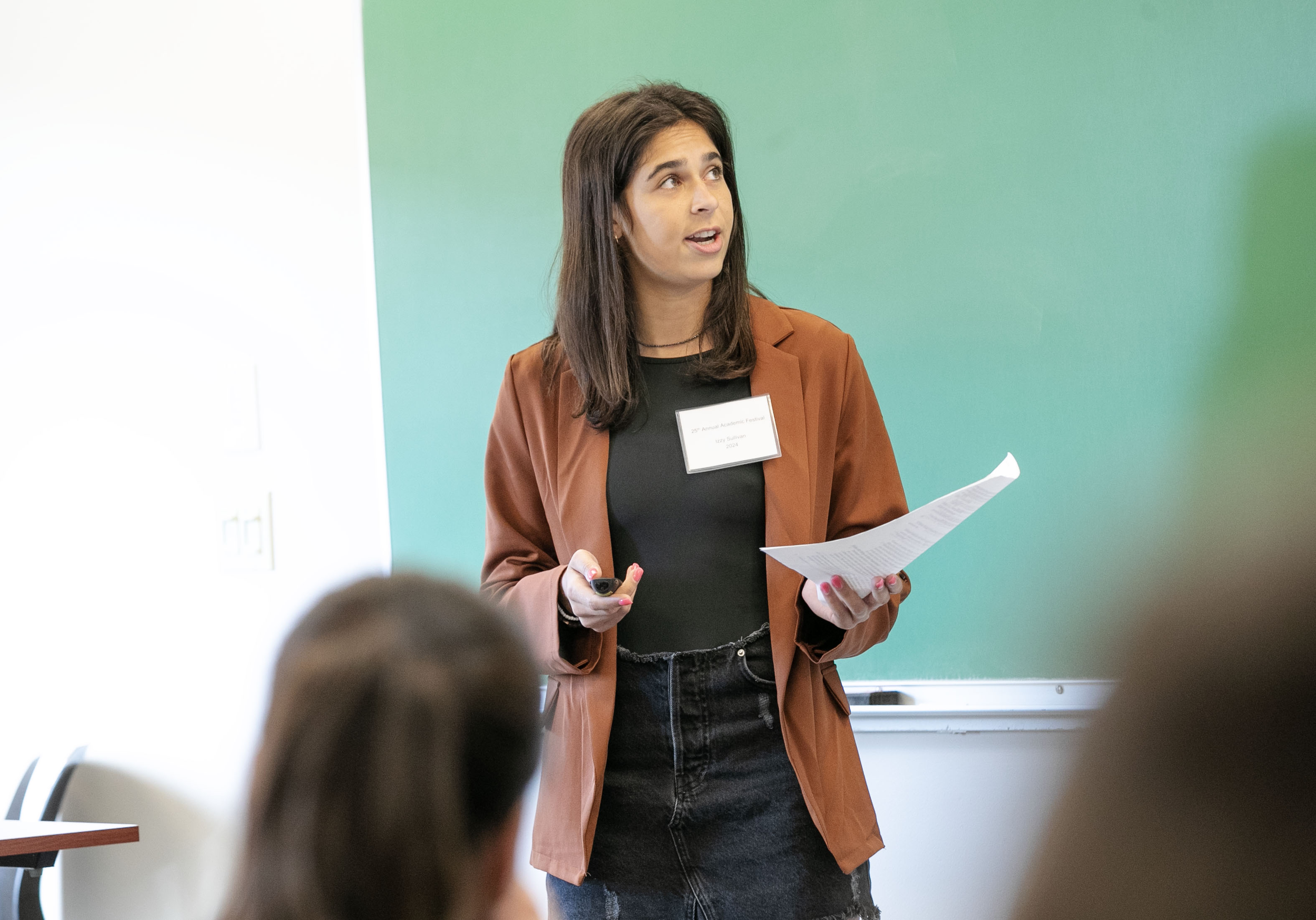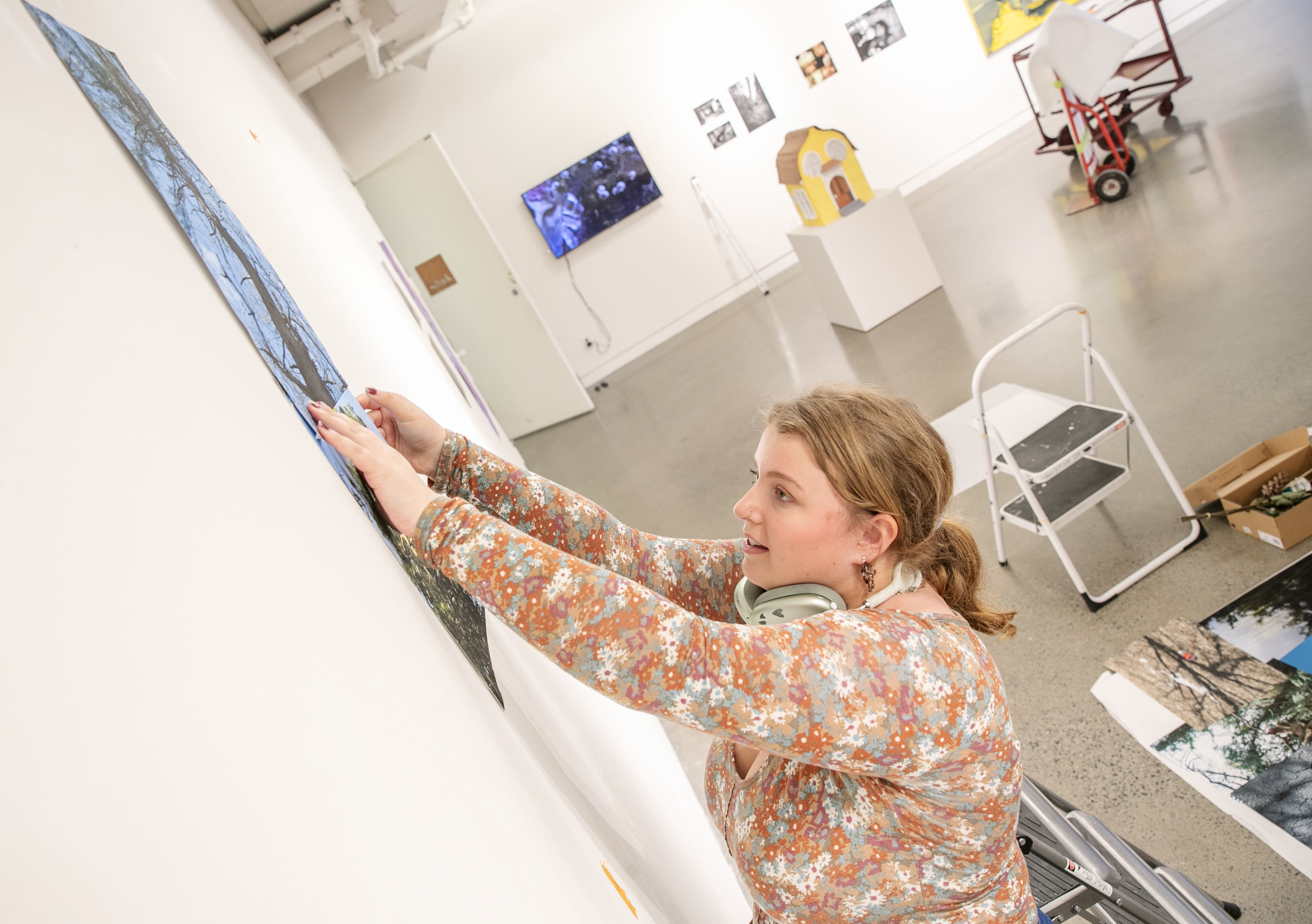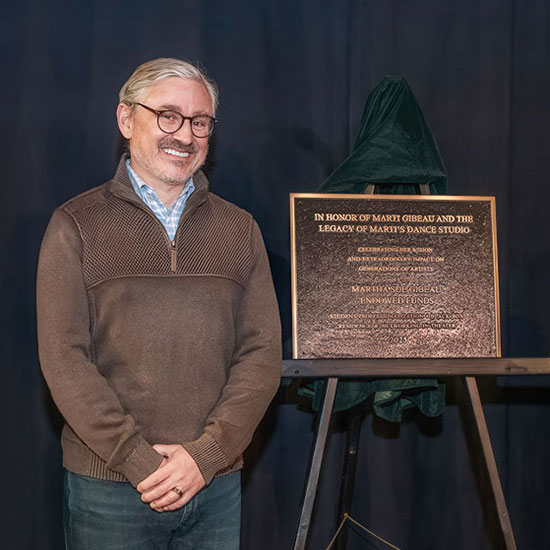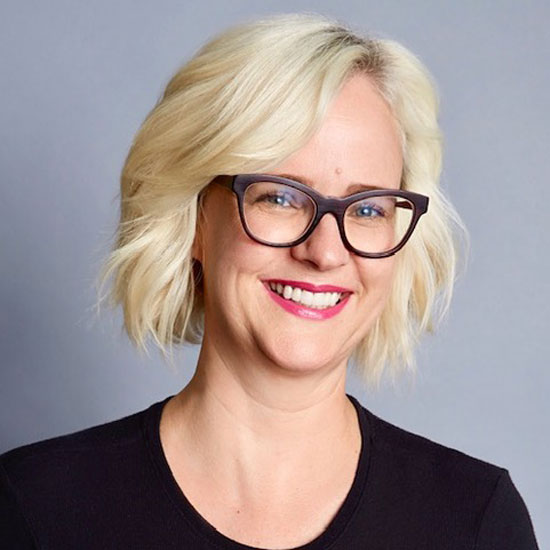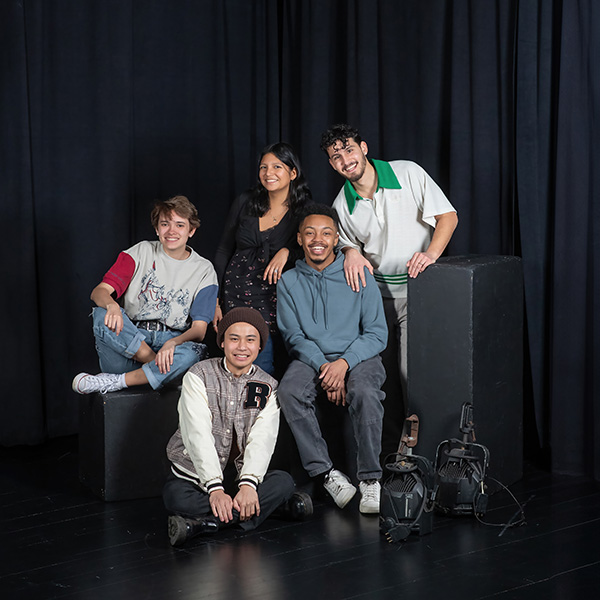Academic Festival: A showcase of learning among peers
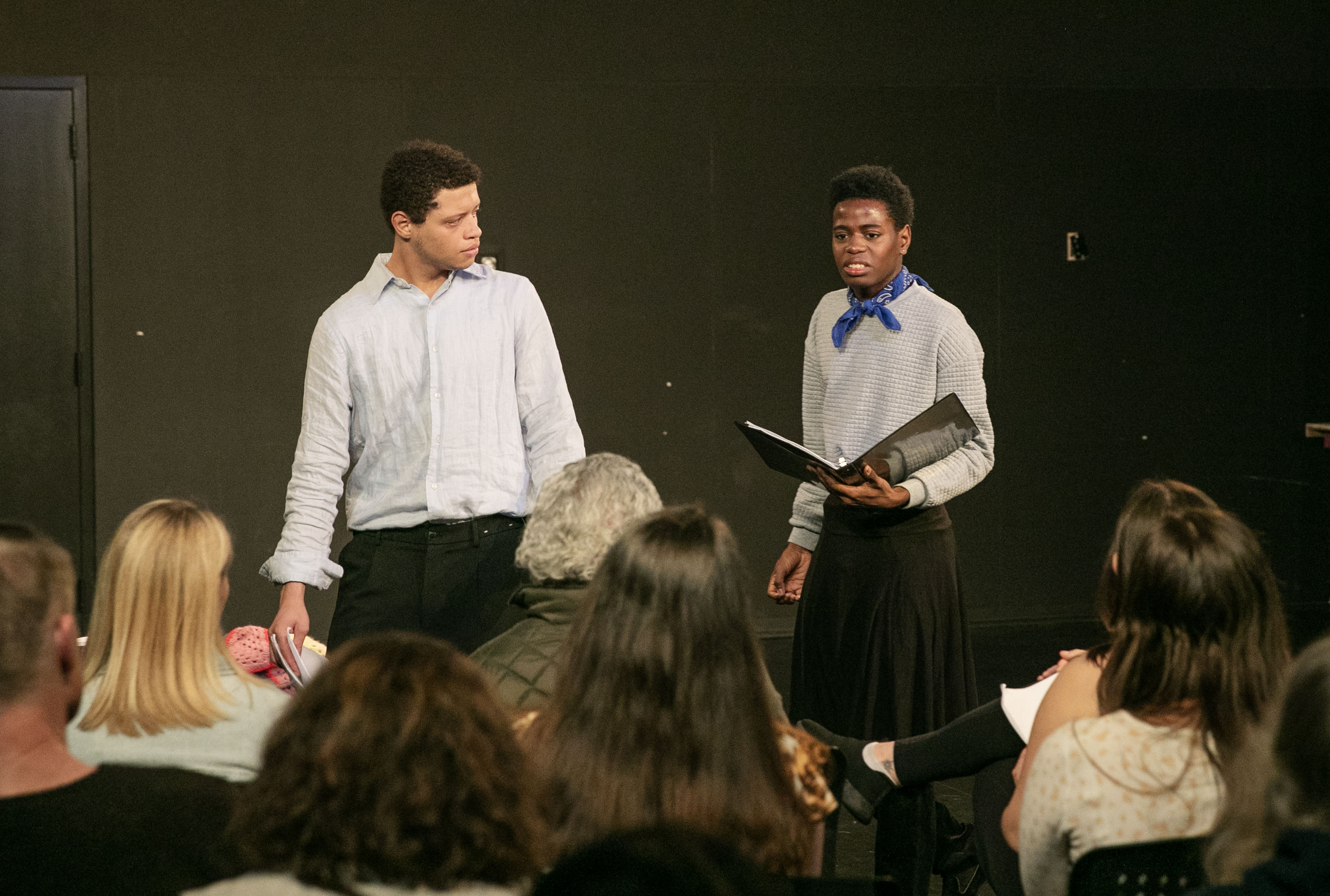
Academic Festival has been a time-honored tradition at Skidmore College for more than two decades. Every spring, on the day following the end of classes, Skidmore students gather to share research, artwork, theses, and other work in a daylong celebration of learning. Students’ presentations are the culmination of months — and sometimes even multiple years — of work.
Each Skidmore academic department participates in Academic Festival differently: In some departments, students offer a formal presentation similar to an academic conference; for others, the presentation might be a performance or an exhibition.
Academic Festival offers a supportive environment, where students collaborate and learn about each other’s work. Students sometimes present multiple times during their academic journey, allowing them to learn from peers and improve their work along the way. For seniors, who often present their capstone projects, Academic Festival often represents an opportunity to reflect on their experiences at Skidmore and the next steps in their professional journeys.
I spoke with five students about their experiences preparing and sharing their projects at Academic Festival and the lessons that they gained along the way.
Trayce Reeves ’24
Physics major
“I presented research I conducted with Professor Mary Odekon in the Physics Department. We are studying large-scale cosmology. Specifically, we have been testing a method of measuring galaxy filament mass based on redshift dispersion. We can then use that measurement to help confirm the total amount of dark matter in space, which is our long-term goal. This semester, we applied this method to the Perseus–Pisces Supercluster (PPS). This filament has a very linear structure and a good alignment, which makes it a great candidate for this method. In the Physics Department we present our research in a poster session.”
How long have you been working on this project?
“I first conducted research with Professor Odekon back in my sophomore year. I took a break last year to work with other professors in the department but decided to return to this project for my senior year.”
What inspired you to focus on this area?
“Large-scale cosmology is pretty cool! Astronomy in general has always been interesting to me and was my main drive for being a physics major. I also really enjoy doing research with Professor Odekon.”
Have you ever presented at Academic Festival before? If so what was that experience like?
“Yes, I also presented in both my sophomore and a junior years. The first time was when I was only taking a course for one credit. There was an upperclassman working on the same project as me, so he took on more of the work when we presented and was in more of a leadership role. I learned from him about how to design a poster and present at Academic Festival, which I appreciated and has been helpful in the last two years.”
What is one thing you want people to know about your project?
“We are making good progress and were able to get preliminary results from our method. The next goal is to apply this method to other filaments, not just the PPS filament.”
How will this project affect your future work?
“I plan to work in aerospace engineering, which will be very different from what I am doing in this lab. But I am really grateful to have gained a lot of coding experience from all the work I have done. I know that that will be invaluable in my future work.”
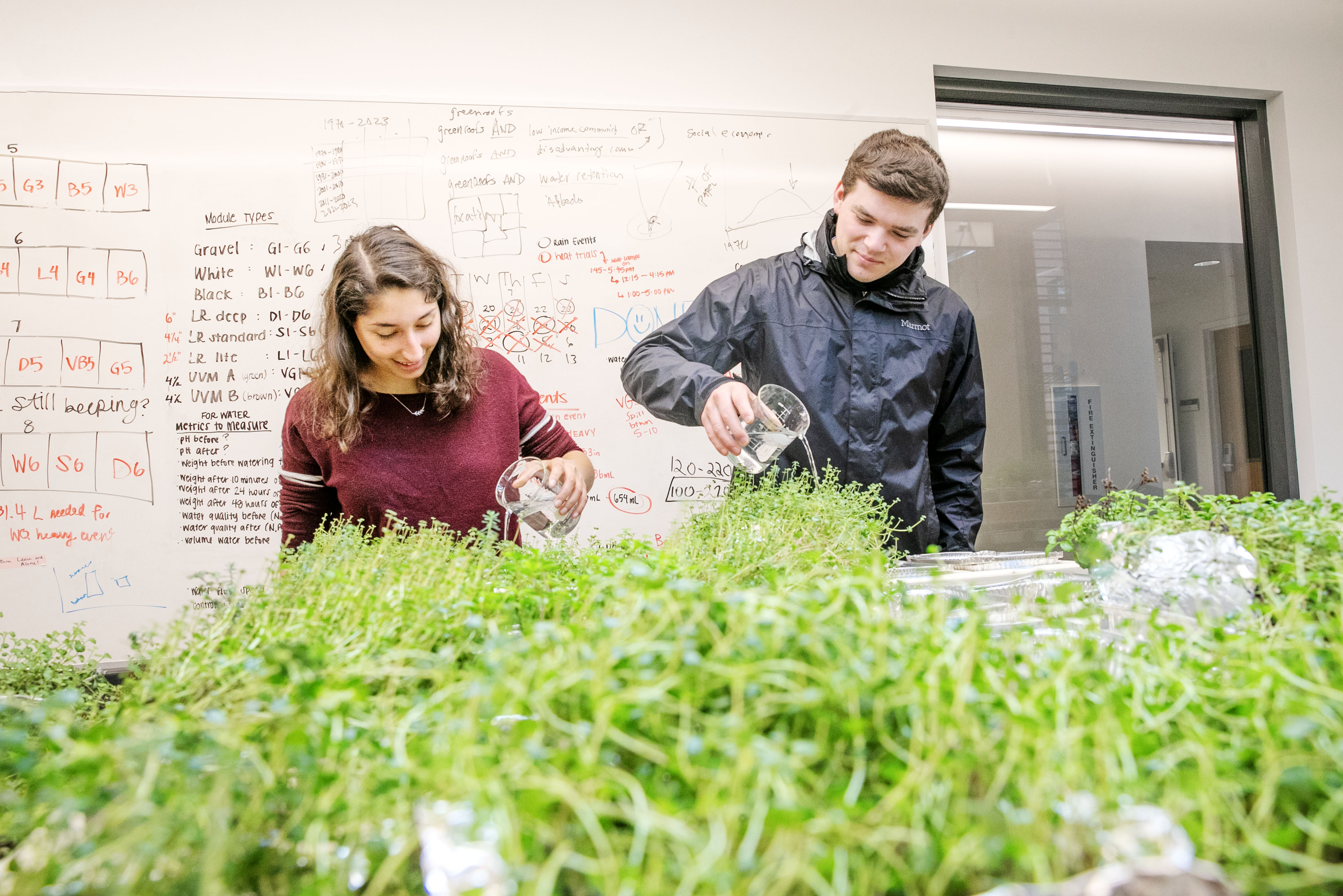
Environmental science majors Kaitlin Katirachi ’24, left, and environmental studies major Jackson Smith ’24 water plants as part of a capstone project on green roofs that their group presented at Academic Festival.
Kaitlin Katirachi ’24
Environmental science major, French and Periclean Honors Forum minors
Jackson Smith ’24
Environmental studies major, English minor
Kaitlin: “Our project is about green roofs, including people’s access to them and their ecological benefits. There's a huge body of literature talking about the benefits of green roofs for stormwater retention, as pollinator habitat, and for insulating buildings. Green roofs are expensive, so what is the best way to get the most benefits from them for the least cost?”
Jackson: “We're also looking to find out the benefits of green roofs in more of a social sense, like quality-of-life changes and the benefits they can bring to people's lives. Who is struggling with green space access right now? How can having access help them? In the Environmental Studies and Sciences Program, the capstone class is a yearlong class, so we've been working on this for a while.”
What inspired you to focus on this area?
Kaitlin: “Jackson and I connected because we both had an interest in urban planning. I'm really into sustainable cities and what those cities will look like in the future.”
Jackson: “On my side, I had taken an urban planning class last year, which opened my eyes to green roofs and the methods to make a building itself more environmentally friendly with benefits for the environment, people's lives, and the actual building itself. Kaitlin brought this idea to our group during a class session that we call “intellectual speed dating.”She inspired us all with this vision of green roofs, and we thought it was an attainable project.”
Have you ever presented at Academic Festival before?
Jackson: “I was given the Skidmore Make Your Voice Heard Public Policy prize in my sophomore year, which was given to me during Academic Festival!”
Kaitlin: “I got that too! It was completely different from this; this time, I’m excited to share what we worked on within the Environmental Studies and Sciences Program.”
What excites you about your presentation?
Kaitlin: “It's something that we worked so hard on. There were several weeks when my group was working in the Billie Tisch Center for Integrated Sciences every single day for several hours. I feel like we did a really good job, so I'm just excited to show everyone.”
Do you have any advice for others about presenting at Academic Festival?
Jackson: “Since spring break, we’ve been going to Albany weekly, sometimes even two to three times a week for our research. It involved a lot of growing out of our comfort zone as we worked directly with residents on ways that might improve their community. A theater professor who works with capstone groups told us that Academic Festival is really a celebration of our research – we should not be intimidated. That's kind of guiding me right now. This really is the highlight of everything we've been doing.”
What is one thing you want people to know about your project?
Kaitlin: “We're seeing more cities take up green roofs, and that's a good thing. But it’s also important to be smart about it and know what your priorities are and to incorporate community input.”
Jackson: “We didn't previously think about infrastructure in this way. When you change the color and the reflectance, you change the actual function of the roof. To actually make these spaces relevant and usable is of the utmost importance. That goes for solar and wind projects as well.”
How will this project affect future work you do?
Jackson: “I'm going into an internship with a company that is buying land to put batteries on. A big part of that is pitching the idea that energy storage is one of our best energy solutions. So our trips to Albany and conversations with stakeholders are all very relevant. If I enter the world of research again, I’ll also have very valuable skills in working with a research team.”
Kaitlin: “While I don't know what I'm doing yet, the basics of our program’s capstone project are really helpful. We saw this entire project through from the planning stage, to buying materials, working with people, and running an experiment. We were involved in every single step of this process and had to think everything through. know now about fixing problems on the go, making changes as necessary, and working as a team.”
Izzy Sullivan ’24
Self-determined major in broadcast journalism with a second major in education studies
“The self-determined major program allows you take a variety of courses from multiple different majors and departments to ‘create your own major.’ After college, I want to work in sideline reporting, so I thought that it would be cool to do that on a smaller scale at Skidmore – for the women's basketball team. I followed the team throughout their season and reported on their practices, games, and season highlights. I wrote a few player stories and another on one of their coaches.”
How long have you been working on this project?
“I’m a member of the women’s soccer team. I started my project right after our season ended in early November.”
What made you want to focus specifically on this area?
“I have always known that I wanted to work in sports. I came to Skidmore because I love the coach for the women's soccer team, I love the players, and I love the liberal arts education. I wasn’t going to let the lack of a formal broadcast journalism program stop me from studying here. The self-determined major program worked out perfectly. I want to work in a league like the NBA or the WNBA adn thought this would be great practice.”
Have you ever presented an academic festival before?
“I haven’t! I was excited to share my project with the self-determined major committee. I also invited my friends and the women’s basketball team, so I’m excited for them to see it, too.”
What's one thing you really want people to know about your project?
“I got a lot of support on my project, and I want people to see that Skidmore is very helpful. The community helps you to do exactly what you want to do and that there's always a way to do something that you want to do.”
Tell me more about your plans for the future.
“This project has helped me a lot. I’ve mentioned this project in all of my interviews and applications. Before this project, I didn’t know how to work a camera or how to edit photos. I did all of the production and behind-the-scenes stuff myself for this project. Gaining comfort with my broadcasting voice and confidence really helped me. It was cool to find my voice in front of the camera and grow my skills behind the camera.”
Elle Oestreich ’25
Psychology and studio art double major
“I have two projects on display in the Schick Art Gallery in the Saisselin Art Building on campus. Nine people are in the show; all are juniors
nominated by a specific professor. It was an honor to be chosen. I decided to present
one main piece called ‘What Remains,’ which is a combination of photos I took and
objects I found and collected. It is really a piece that focuses on the connections
between the natural world and the human world.
“In tandem with that project, I am also putting on another project, ‘Vulnerable Body.’
This is a work I did while I was abroad studying art in Ireland. While I was there,
I constructed multiple portraits and went into the natural environment to shoot them.”
How long have you been working on this project?
“About a year. The main project has photos from the summer, from when I was abroad, from this semester, from New York, from LA — from all over!”
What inspired you to focus on this area?
“For ‘What Remains,’ I was interested in how we are all going to die, and that can
either be a very scary thing, or something we are grateful to share. I am also reflecting
on how most of the material in the project will last well beyond our lifetimes. I
wanted to focus on change being such a natural part of life and, though uncomfortable,
essential for growth.
“And for ‘Vulnerable Body,’ it started as just an exploration of my own relationship
to my body and what it can do for me. And then it became an exploration of how I put
so much pressure on the human form and how the human body is so temporary.
“I’ve been a little nervous about how people may perceive the photos in ‘Vulnerable
Body,’ but my advisor, Lecturer Emily Vallee, has been extremely helpful and supportive.
I’m excited for everyone to come and see my work.”
How will this project affect future work you do?
“‘What Remains’ is specifically a second iteration of something I started a while ago, so I think this work represents how my practice changes over time.”
